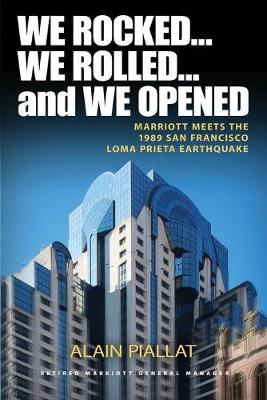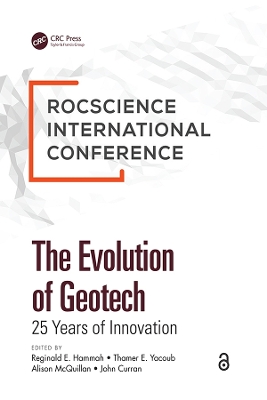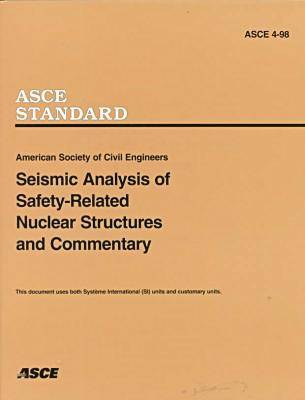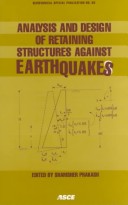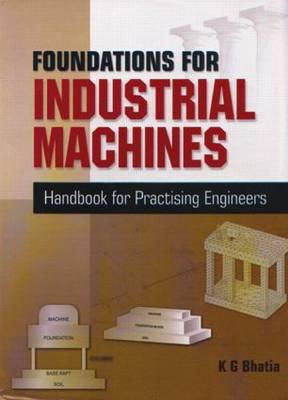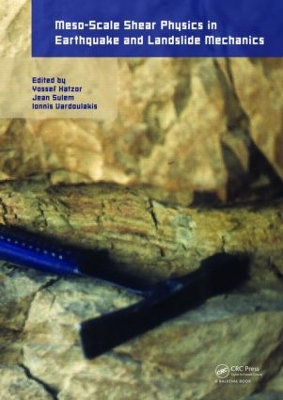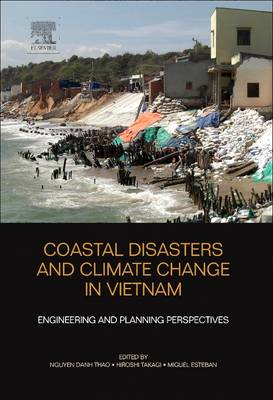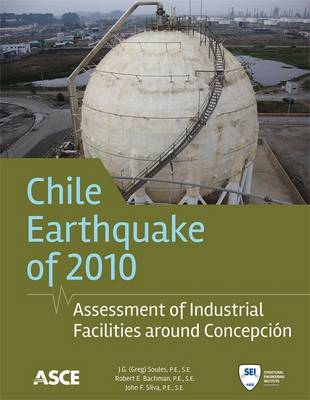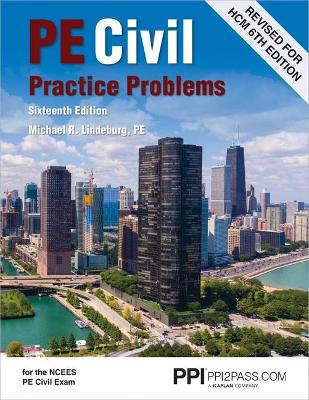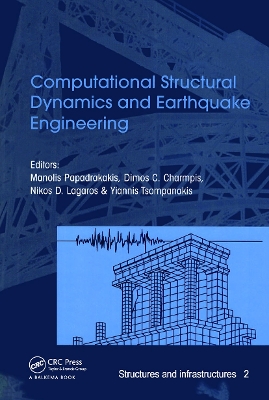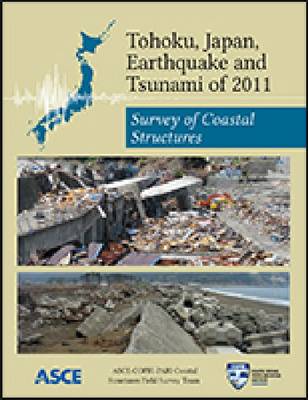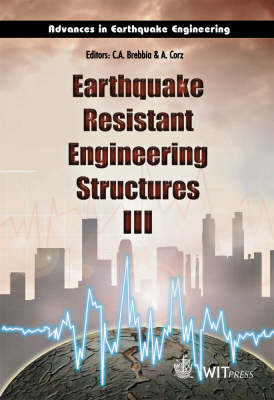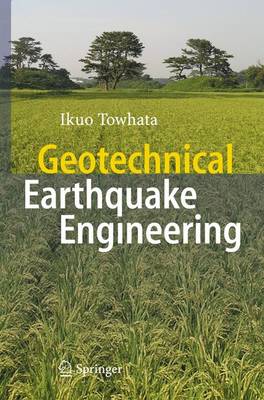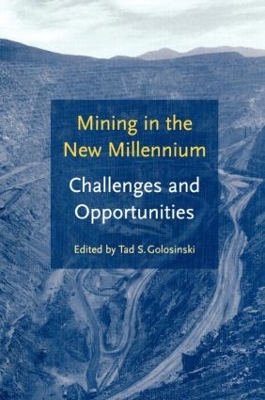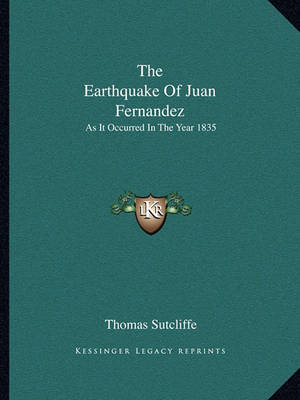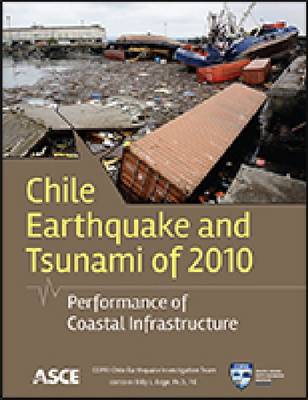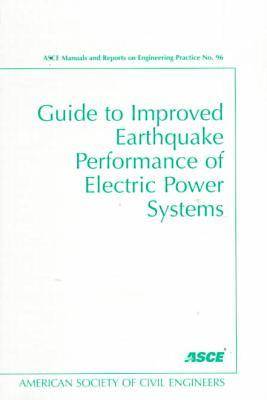This manual contains the complete illustrated solutions to all the problems in the seventh edition of Craig's Soil Mechanics.
The Evolution of Geotech - 25 Years of Innovation
This publication includes 82 technical papers presented at Rocscience International Conference (RIC) 2021, held online on April 20 and 21, 2021. Rocscience created this event to bring geotechnical academics, researchers and practitioners together to exchange ideas as part of celebrating 25 years of the company’s existence. The papers in these proceedings were from keynotes, panel discussions and papers, selected after careful review of over 100 technical submissions delivered at RIC 2021. The t...
Seismic Analysis of Safety-related Nuclear Structures, ASCE 4-98
by American Society of Civil Engineers
This standard provides requirements for performing analyses of new structure design or existing structure evaluation to determine the reliability of structures under earthquake motions. Rules and analysis parameters that are expected to produce seismic responses with about the same probability of non-exceedance as the input are outlined. Specifications of input motions are provided. Analysis standards are given for: modeling of structures; analysis of structures; soil-structure interaction model...
This proceedings, ""Analysis and Design of Retaining Structures Against Earthquakes"", contains both invited and contributed papers, which focus on the questions of dynamic earth pressures on fixed and movable rigid and flexible walls; displacements in translation and rotation of walls under earthquakes; behavior of fills and abutments during earthquake; and centrifuge tests on walls. Both analytical and experimental data have been presented on possible behavior of retaining structures under sei...
The performance, safety and stability of machines depends largely on their design, manufacturing and interaction with environment. Machine foundations should be designed in such a way that the dynamic forces transmitted to the soil through the foundation, eliminating all potentially harmful forces. This handbook is designed primarily for the practising engineers engaged in design of machine foundations. It covers basic fundamentals for understanding and evaluating dynamic response of machine fou...
Earthquake Resistant Engineering Structures XI (WIT Transactions on The Built Environment, #172)
In its 11th year, and reporting on the latest research on preparation for and mitigation of future earthquakes, this volume examines an area of increasing importance to many countries around the world. ERES 2017 assembled experts from around the world to present their basic and applied research in the fields of earthquake engineering relevant to the design of structures. As the world's population has concentrated in urban areas resulting in buildings in regions of high seismic vulnerability, we...
This book outlines the geospatial technologies and analytical tools needed for safeguarding built infrastructure assets from natural disasters, and preparing for disaster resilience and risk reduction. It takes a whole life approach to infrastructure destruction and the related cost of natural disaster. It reviews weather related natural disasters exacerbated by climate change, deforestation, agricultural loss and public health risk, and commercial loss, and discusses the significance of infrast...
Meso-Scale Shear Physics in Earthquake and Landslide Mechanics
The identification of meso-scale phenomena – occurring between microscopic and continuum length scales – has been one of the most exciting developments in rock mechanics in the last decade. Meso-scale phenomena are considered as the bridge between the two length scales in understanding shear between material interfaces as well as particulate systems and in studying material response. Examples are the initiation of seismic slip along fault planes at great depths at rates nearing shock conditions,...
Coastal Disasters and Climate Change in Vietnam
Coastal Disasters and Climate Change in Vietnam is the first book to focus specifically on natural hazards and climate change in Vietnam. The book examines threats such as tropical cyclones, sea-level rise, flooding, erosion, and salinity intrusion, and their respective effects on coastal structures and environments. It also looks at crucial management and mitigation efforts, including breakwater design, irrigation systems, coastal dunes and dikes, and more. The challenges faced by this countr...
Chile Earthquake of 2010
On February 27, 2010, an earthquake off the coast of Chile registered a magnitude of 8.8, making it the largest in Chile since 1960. Between those two massive quakes, Chile enacted codes to improve the seismic resilience of structures. Because the Chilean codes are similar to codes in the United States, the performance of industrial facilities in Chile provided an unprecedented opportunity to study how heavy U.S. industrial facilities might perform during a large seismic event. In April 2010, t...
Ppi Pe Civil Practice Problems, 16th Edition - Comprehensive Practice for the Ncees Pe Civil Exam
by Michael R Lindeburg
Computational Structural Dynamics and Earthquake Engineering (Structures and Infrastructures)
The increasing necessity to solve complex problems in Structural Dynamics and Earthquake Engineering requires the development of new ideas, innovative methods and numerical tools for providing accurate numerical solutions in affordable computing times. This book presents the latest scientific developments in Computational Dynamics, Stochastic Dynamics, Structural Dynamics and Earthquake Engineering in thirty-five self-contained contributions. The selected state-of-the-art chapters are revised...
Sponsored by the Coasts, Oceans, Ports, and Rivers Institute of ASCE; Port and Airport Research Institute of Japan. On March 11, 2011, a magnitude 9.0 earthquake rumbled off the east coast of Japan, followed by a tsunami that generated waves more than 18 meters high. The earthquake and tsunami caused devastation throughout the Tohoku and Sendai regions of Japan, killing nearly 16,000 people and causing damage estimated at more than US$126 billion. For seven days in May 2011, an ASCE/COPRI Coas...
Based on the proceedings of the Third International Conference on Earthquake Resistant Structures (ERES), this book presents basic and applied research in the main fields of engineering relevant to earthquake resistant analysis and design of structural systems. The challenge of protecting the built environment in the earthquake-prone regions of the world can be divided into two: the optimal design and construction of new facilities and the upgrading and rehabilitation of existing structures....
Geotechnical Earthquake Engineering (Springer Series in Geomechanics and Geoengineering)
by Ikuo Towhata
This fascinating new book examines the issues of earthquake geotechnical engineering in a comprehensive way. It summarizes the present knowledge on earthquake hazards and their causative mechanisms as well as a number of other relevant topics. Information obtained from earthquake damage investigation (such as ground motion, landslides, earth pressure, fault action, or liquefaction) as well as data from laboratory tests and field investigation is supplied, together with exercises/questions.
This comprehensive textbook combines classical and matrix-based methods of structural analysis and develops them concurrently. It is widely used by civil and structural engineering lecturers and students because of its clear and thorough style and content. The text is used for undergraduate and graduate courses and serves as reference in structural engineering practice. With its six translations, the book is used internationally, independent of codes of practice and regardless of the adopted sys...
Mining in the New Millennium - Challenges and Opportunities
This text concentrates mainly on the Polish mining industry. It involves mining of a significant quantities of lignite, coal, copper, sulphur and many industrial minerals, which are all discussed in this book.
Prepared by the Chile Earthquake Investigation Team of the Coasts, Oceans, Ports, and Rivers Institute of ASCE. On February 27, 2010, an earthquake of magnitude 8.8 occurred off the coast of south-central Chile, causing intense shaking for as long as three minutes and generating a tsunami that spread across the Pacific Ocean. The earthquake--the fifth largest recorded to date--was much stronger than the 2010 Haiti earthquake, yet the Chile earthquake and tsunami combined caused substantially le...
Recent moderate and strong California earthquakes demonstrate that parts of electric power systems are very vulnerable to damage. Most damage is due to the failure of porcelain elements in high-voltage substation equipment, although, performance is also strongly influenced by specific equipment designs and installation practices. Damage to various lifelines and structures has impaired the performance of some communication and control systems after earthquakes. This manual issues methods to impro...

